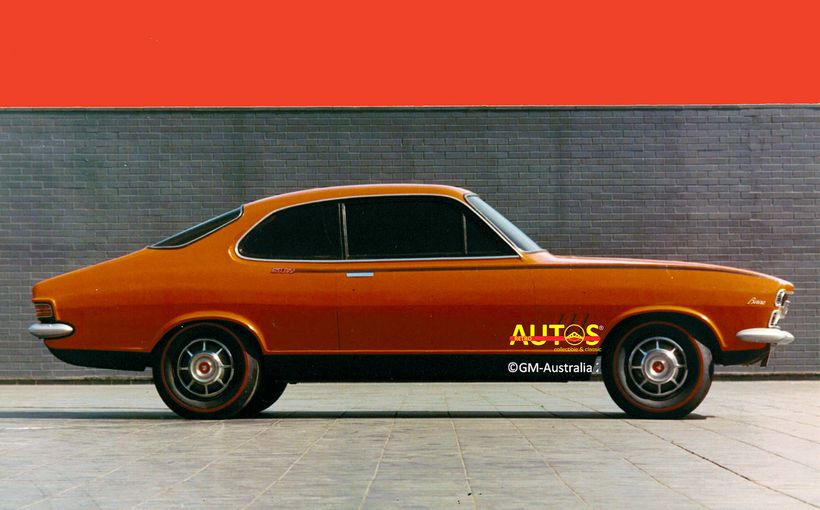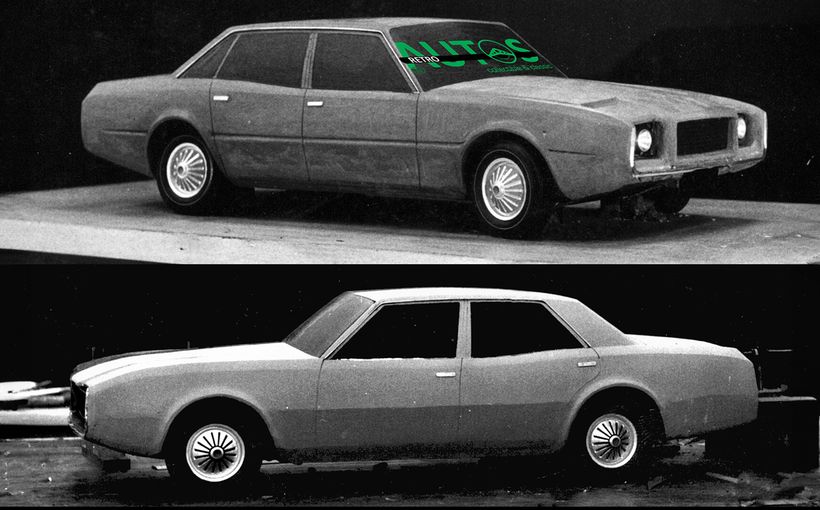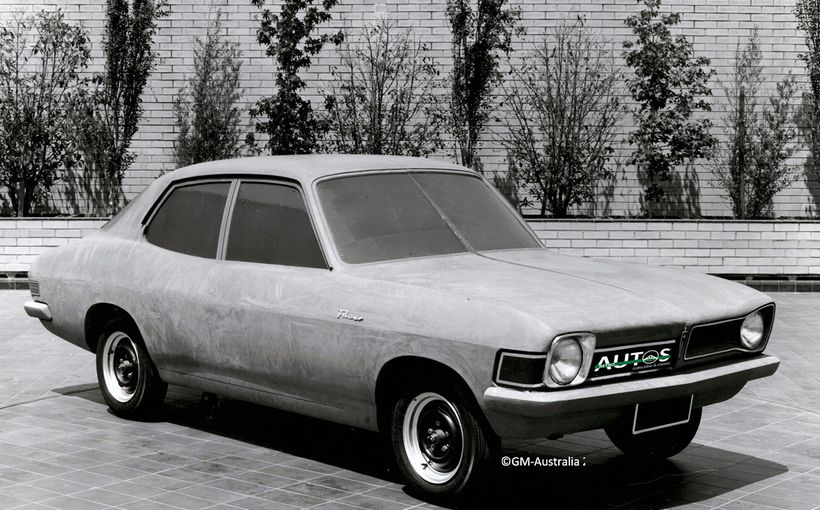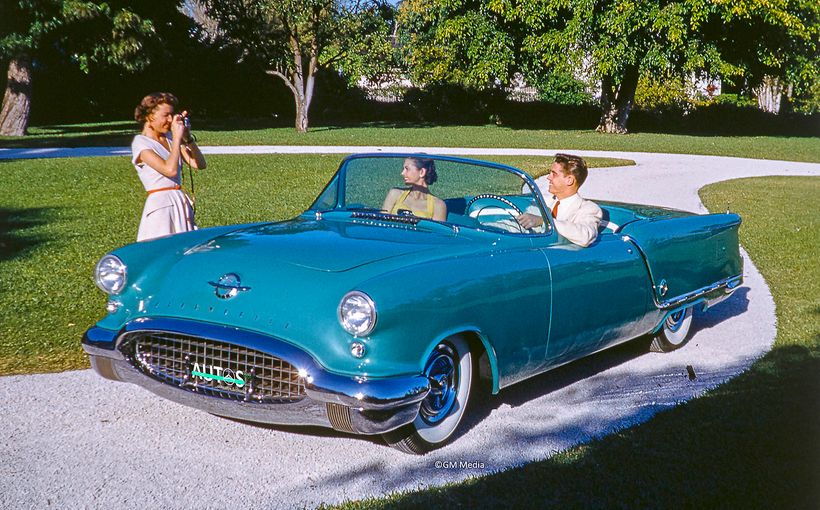Creating and saving the Corvette: 70th anniversary

Seventy years ago, the Corvette was created. Sixty-eight years ago, it was saved from being axed.
Two men are integral to the Corvette’s creation and salvation. Let’s start with the creator, Harley J. Earl, GM’s design boss from 1927 to 1958.

The Creator
Harley Earl’s grandson, Richard, has shared his insights about the inspirations that led to one of his grandfather’s most memorable cars. Richard is an automotive historian and there’s a link to his website at the end.
During a discussion he indicated that his grandfather was very aware of the growing popularity of sports cars in 1950 and 1951. Earl’s sons, one being Richard’s father, were sports car racing fans and that also made an impression on their father.

Richard Earl has written about the weekend of the 14th and 15th September 1951, his grandfather spent at the Watkins Glen race track during a Sports Car Club of America event. It is considered a moment in time when it all came together.
In a co-authored a story with writer Charlie Coon, which appeared the Watkins Glen/Elmira Star Gazette newspaper, Richard revealed that his grandfather commented to his host for the weekend, local Chevrolet dealer, Dominick Fraboni, that major American car makers had nothing to counter the imported sports cars that everyone admired on the track and could be found in the spectator parking lots. Soon after Earl returned from Watkins Glen, he established a small and secret working group in his styling studios to develop an affordable American sports car. It was called Project Opel.

Exterior styling of the project was given to Bob McLean. Joe Schemansky was responsible for the interior. Chevrolet’s newly appointed chief engineer Ed Cole was also part of the team. A decade later Joe would become the first design director at Holden. Ed Cole would rise to the very top of GM.


Everyone knew that Project Opel would never sell in large numbers, so to keep costs down it had to be based on existing Chevrolet parts as much as practicable. To help limit weight, the body would be made of a relatively new material, fibreglass.


Two fully operable prototypes were completed by the end of 1952. One was for testing ahead of possible production. The other was Chevrolet’s contribution to a travelling car show that GM was planning for 1953.





And that car show was the fabulous Motorama, opening its nationwide tour at New York City’s most prestigious hotel, the Waldorf Astoria.
It opened on 17th January and 45,000 people attended that first day. By the time it closed on 23rd January, GM claimed that 307,000 people had cast their eyes upon the gleaming dream cars and specially prepared production models.

Each of GM’s American divisions showcased a dream car. Oldsmobile paraded their four-seater Starfire luxury convertible. Pontiac went very formal with the Parisienne Town Car. Buick matched Oldsmobile with their Wildcat. Cadillac showcased two cars, the Le Mans convertible and, predicting design and engineering trends, a four-door hardtop called the Orleans. Chevrolet’s dream car now had a name: Corvette.

Some compromises have been made during the Corvette’s development. Because Chevrolet did not yet have a V8, it was powered by their six cylinder “Blue Flame” engine. No manual gearbox either. A powerglide automatic dispersed the horsepower. Gear selection was via an awkwardly positioned floor mounted shifter. Clear detachable “curtains” replaced door windows. True sports car devotees are not impressed. But all of that mattered little to the crowds. The Corvette was the star of the Motorama.


The positive reaction to the car encouraged GM’s President, Harlow “Red” Curtis, to accelerate the plans to put the car into production. Six months later, and only 20 days after the 1953 Motorama had finished its tour of the USA, the Corvette appeared in dealer showrooms.
In 1998, Harley J. Earl was the first person inducted into the Corvette Hall of Fame at the National Corvette Museum, 350 Corvette Drive, Bowling Green, Kentucky. Chuck Jordan, then retired as only the fourth person to hold the vice presidency of GM design, summed it up for the induction ceremony:
“The father of the Corvette is only one man, Harley Earl. He was the creator. He had the idea.”

The Saviour
Sometime during the Motorama’s time at the Waldorf—the exact date is lost in time—an engineer/race car driver made a visit.
He was born in 1909 in Belgium, to Russian parents. After the family returns to St Petersburg, he lives through the horrors of World War One, sees the Tsar toppled and the communists come to power in 1917.
He gains an engineering degree at a German university and then works in Berlin during the rise of the Nazis. Because of his Jewish faith, he knows he must leave Germany and heads to France. When France surrenders during World War II, he and his wife Elfi and his brother, Yura, escape to Portugal and find passage on a ship that takes them to New York.
His name is Zora Arkus-Duntov.

When he walks into the Motorama, Duntov is already well known in the American hot-rodding community for the development of the “Ardun” cylinder heads for the flat head V8 Ford. The heads increase old man Henry’s V8 horsepower by 60%. He’s also raced an Allard at Le Mans in 1952 and made qualify runs for the 1946 and 1947 Indianapolis 500.
What he sees in front of him at the Waldorf that day is his future. He writes to GM asking for a job on the Corvette program and is hired immediately as an engineer.

In December 1953, he composes a memo to his new boss, Maurice Olley. The memo is entitled "Thoughts Pertaining to Youth, Hot Rodders and Chevrolet".
It is a spirited memo which warns that Ford is winning the hearts and minds of young hot rodders because of the cheap parts available for the flathead V8. Duntov warns that Ford will gain a further advantage with its new OHV V8, unless GM does something. He emphasises his support for the development of the small block Chevrolet V8, and advocates for inexpensive parts—camshafts, valves, pistons etc— to be made available in order to promote Chevrolet to the ever-growing youth market. He also wants to associate the Corvette with the new V8. You can read the memo here, thanks to GM’s Heritage Centre. The red pencil under lining is believed to be Olley’s.



What Duntov says is taken seriously and echoed by many within the Chevrolet management ranks including Ed Cole. Sales of the six-cylinder Corvette are not as high as expected. Only 300 have been sold. It is hamstrung by the lacklustre powertrain and its high price, $US3500, almost double what was originally envisaged, and 60% more than a top of the range Bel Air convertible. Not surprisingly GM’s senior executives are getting cold feet about the car’s potential. By mid-1954 there’s talk of ceasing production.

In October 1954, Duntov pens another pivotal memo. He does not want the Corvette to be cut. His second memo is a passionate call for the need to have a “hero car”, such as the Corvette, in the Chevrolet line up that speaks to the youth of the USA and provides the entire Chevy range with some much needed pizzazz.
At the same time, Ford begins production of its glamorous “hero car”, the Thunderbird, which it had announced earlier in the year. The combined impact of Duntov’s arguments and the public’s acclaim for the T-Bird convinces GM’s decision makers to grant the Corvette a reprieve. From that point on, Duntov commandeers the development of the Corvette until he retires in 1975.


He sets about making some basic changes. The first thing to go is the anaemic six-cylinder engine and automatic transmission. Duntov replaces them with Ed Cole’s new small block V8 and a three-speed manual transmission. In 1957 he straps fuel injection onto the V8. And so it goes, year after year, improvement after improvement.
Duntov’s magic transforms the Corvette from a stylish cruiser into an object of primal desire for generations of Americans and others around the world.

When he dies in April 1996, Pulitzer Prize winning American columnist and author George Will writes of Duntov in the Washington Post newspaper: “If you do not mourn his passing, you are not a good American.”
In 1998 he was inducted into the Corvette Hall of Fame. In 2022, his wife, Elfi Zora-Duntov, who died in 2008, was also inducted into the Hall of Fame. Their ashes are interred at the National Corvette Museum.

Link: Richard Earl’s website
Retroautos is written and published by David Burrell with passion and with pride. Special thanks to John Kyros at the GM Heritage Centre for his research. Special thanks also to Richard Earl for his insights. COPYRIGHT: Retroautos’ stories and images are copyrighted. Reproducing them in any format is prohibited. Retroautos is a registered trademark. Reproducing it in any format is prohibited.









